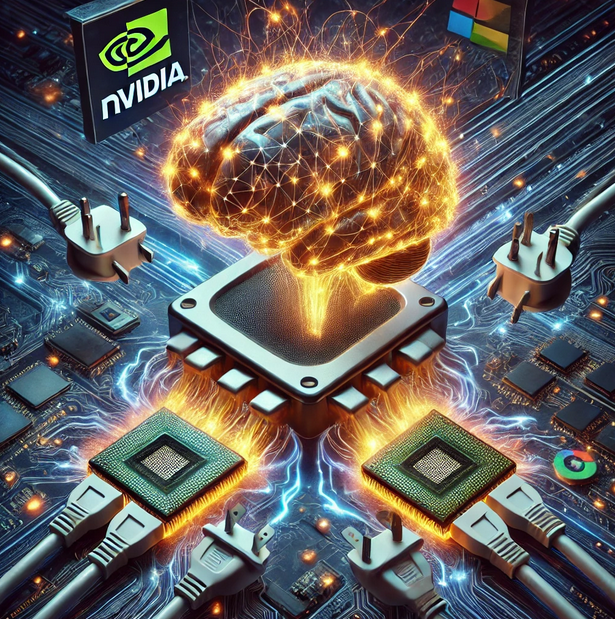(NVDA), (GOOGL), (AMZN), (AAPL), (META), (MSFT)
It's been two years since ChatGPT burst onto the scene, and the artificial intelligence world is facing a serious reality check. The skyrocketing energy costs of building and running bigger AI models are putting the brakes on progress.
But before we start sounding the alarm bells, let's take a closer look.
Let's not mince words: large language models are energy hogs. Training OpenAI's GPT-4 model gobbled up enough juice to power 50 American homes for a century.
And as these models bulk up, so do the bills. Today's behemoths cost about $100 million to train. The next generation? We're looking at $1 billion. And the one after that? A cool $10 billion.
And it doesn't stop there. Every time you ask an AI to do something, it's like running up a tab. Summarizing financial reports for all 58,000 public companies worldwide could set you back anywhere from $2,400 to $223,000.
Over time, these "inference" costs can outstrip the initial training expenses. If that's the case, how can generative AI ever become economically viable? This scenario is enough to make any investor uneasy, especially those who've gone all-in on AI.
Just look at Nvidia (NVDA), the chip designer powering most AI models. Its market cap has ballooned by $2.5 trillion in two years.
Venture capitalists have poured nearly $95 billion into AI startups since 2023 kicked off.
And OpenAI? They're reportedly gunning for a $150 billion valuation, which would make them one of the biggest private tech firms on the planet.
But before you start panic-selling, take a breath. We've been here before with other game-changing technologies.
Remember when getting to space seemed impossible? Those innovations now power our everyday lives.
The 1970s oil crisis? It kickstarted energy efficiency and alternative power sources. Fracking made previously untouchable oil and gas reserves accessible, turning America into the world's top oil producer.
We're already witnessing similar creativity in AI.
For example, companies are now developing chips specifically designed for the operations required to run large language models. This specialization allows them to operate more efficiently than general-purpose processors like those from NVIDIA.
Tech giants like Alphabet (GOOGL), Amazon (AMZN), Apple (AAPL), Meta Platforms (META), and Microsoft (MSFT) are all designing their own AI chips.
In fact, more money has flowed into funding AI-chip startups in the first half of this year than in the past three years combined.
At the same time, the industry is rethinking its approach to AI models. The mantra of "bigger is better" is giving way to a focus on smaller, more specialized systems.
OpenAI's newest model, O1, focuses on reasoning rather than text generation. Other developers are streamlining calculations to squeeze more performance out of existing chips. By mixing and matching models for different tasks, they have slashed processing times.
Taking a good look at how AI companies are pivoting these days, it's clear that the old tech playbook is getting tossed out the window.
Remember when we all thought the big incumbents were untouchable? Well, in the world of AI, that idea's about as useful as a screen door on a submarine. Simply put, the game has changed.
While NVIDIA currently sells four-fifths of the world's AI chips, specialized rivals could start eating into its market share. Already, Google's AI processors are the third most used in data centers worldwide.
OpenAI may have kicked off the large language model craze, but as resource constraints bite, rivals like Anthropic, Google, and Meta are catching up fast.
There's still a gap between these heavyweights and second-tier models like France's Mistral, but it's narrowing.
So, if the trend towards smaller, specialized models continues, we might see a galaxy of AI models instead of just a few superstars. Keep an eye out for these up and coming challengers.


